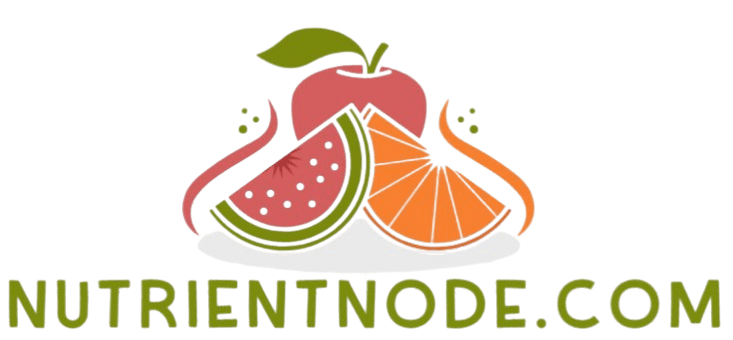The Connection Between Dietary Guidelines and Health
Dietary guidelines serve as essential navigational tools in your quest for optimal health and well-being. These recommendations provide valuable insights into what defines a balanced diet, empowering you to make informed nutritional choices.
This article delves into the essence of dietary guidelines and their critical importance for your health. It examines their positive impacts and potential drawbacks and offers practical tips for seamlessly integrating them into your daily routine.
Get ready to explore the latest recommendations and contemplate future changes that might reshape our dietary landscape. Join the journey as you explore the intricate connection between dietary guidelines and your overall health.
Contents
- Key Takeaways:
- Understanding Dietary Guidelines
- The Impact of Dietary Guidelines on Health
- Following Dietary Guidelines for Optimal Health
- Current Dietary Guidelines and Recommendations
- Future Directions for Dietary Guidelines and Health
- Frequently Asked Questions
- What are dietary guidelines and why are they important for health?
- How are dietary guidelines developed?
- How do dietary guidelines affect chronic diseases?
- Do dietary guidelines apply to everyone?
- Can following dietary guidelines improve existing health conditions?
- What are some practical ways to incorporate dietary guidelines into daily life?
Key Takeaways:

Eating according to dietary guidelines can positively impact overall health by promoting balanced nutrition and reducing the risk of chronic diseases. It’s important to understand and follow these guidelines for optimal health, but be mindful of potential negative effects such as restrictive eating patterns and disordered eating. Incorporating dietary guidelines into daily life can be achieved through small, sustainable changes and moderation rather than strict adherence. Keep updated on current guidelines and recommendations for future health improvements.
Understanding Dietary Guidelines
Understanding dietary guidelines is essential for you to achieve optimal health and wellness. These recommendations, based on research, provide valuable insights into nutritious food choices, nutrient needs, and dietary patterns that are crucial for preventing disease. Exploring the impact of dietary guidelines on public health can further enhance your understanding of these important concepts.
Grounded in nutrition science and established by the USDA and HHS, these guidelines evolve over time to incorporate the latest scientific research and public health objectives, as suggested by the Dietary Guidelines Advisory Committee.
They offer a framework for you, health care providers, and community groups to promote well-being and prevent chronic diseases through informed dietary practices.
What are Dietary Guidelines?
Dietary guidelines represent a collection of recommendations crafted to enable you to make informed food choices that enhance your health and well-being.
These guidelines encourage you to embrace a diverse array of fruits and vegetables, whole grains, lean proteins, and healthy fats, all of which promote getting enough nutrients.
They provide a structured framework that allows you to customize your diet according to your personal health needs and lifestyle preferences.
Among the essential components is a strong focus on minimizing saturated fats, sugars, and sodium while promoting hydration through water.
By consistently adhering to these principles, you can elevate your overall health and establish a solid foundation for long-term wellness.
Why are They Important for Health?
Dietary guidelines are essential for your health, offering a comprehensive framework for disease prevention and promoting overall well-being. For a deeper insight, understanding the science behind dietary guidelines can guide you toward healthier eating patterns that significantly reduce the risk of chronic diseases such as diabetes and heart disease.
These guidelines are a critical tool for you, emphasizing the importance of balanced nutrition in your everyday life. By helping you understand essential nutrients, portion control, and the value of varied food choices, they enable you to make informed decisions about what you eat.
Nutrition education helps communities recognize how their dietary habits affect overall health. By integrating these principles into your personal routines and supporting public health initiatives, you can help combat the rise of diet-related diseases, paving the way for a healthier future for everyone.
The Impact of Dietary Guidelines on Health
The impact of dietary guidelines on health is significant, shaping public health policies and influencing your individual choices, including the connection between physical activity and dietary guidelines.
By adhering to these guidelines, you can play a crucial role in reducing the prevalence of diet-related chronic diseases and enhancing overall population health.
Positive Effects on Overall Health

The positive effects of following dietary guidelines are remarkable. They lead to improved dietary intake, fulfillment of nutrient needs, and overall health promotion, contributing to a healthier lifespan.
These guidelines provide clear frameworks for making informed food choices. You can achieve a balanced intake of carbs, proteins, and fats while ensuring you receive essential vitamins and minerals.
Research shows that people who follow these recommendations enjoy lower risks of chronic diseases, such as heart disease and diabetes. They also often experience better mental health outcomes.
You might find that your physical vitality increases. This can enhance cognitive function and boost your energy levels.
Incorporating these dietary principles into your daily routine fosters a vibrant life and supports longevity, all grounded in sound nutritional science.
Potential Negative Effects
While dietary guidelines are crafted to enhance health, misinterpretation can lead to unintended consequences. Neglecting to tailor your dietary choices to your individual needs can cause confusion about what a balanced diet truly entails.
This confusion may lead many to adopt excessively restrictive eating patterns. Such trends can have serious implications, especially if they don t align with your personal health goals, potentially worsening existing health concerns.
The pressure to follow popular dietary fads can overshadow the vital practice of tuning into your body s specific requirements.
You might find yourself caught in a cycle of frustration, guilt, and confusion, jeopardizing your overall well-being and nutrition aspirations.
Following Dietary Guidelines for Optimal Health
Following Dietary Guidelines for optimal health means embracing practical tips and strategies. These enable you to make healthier food choices while boosting physical activity.
This holistic approach enhances your health outcomes and enriches your overall quality of life.
Tips for Incorporating Guidelines into Daily Life
You can easily incorporate dietary guidelines into your daily routine! Simple yet effective strategies enhance your eating habits and food choices.
Engaging with healthcare providers for personalized nutrition education will supercharge your journey to health. Establishing a consistent meal planning routine helps you prioritize nutrient-rich foods like fruits, vegetables, whole grains, and lean proteins.
A key strategy is creating a weekly menu. This reduces food waste while promoting variety in your meals. Utilizing nutrition apps or community workshops offers ongoing support and valuable education.
Your healthcare providers are essential allies, providing tailored advice and coaching. They ensure you have the tools and knowledge necessary to adopt healthier eating patterns sustainably, setting you up for long-term success.
Current Dietary Guidelines and Recommendations
The current Dietary Guidelines and Recommendations, particularly the 2020-2025 Dietary Guidelines for Americans, provide a thorough, evidence-based framework. This framework is designed to enhance your healthy eating patterns and guide nutrition-related policies.
Overview of Major Guidelines and Recommendations

An overview of major guidelines and recommendations highlights the essential food groups, serving sizes, and the amount of nutrients you should eat for a balanced diet and optimal health. These guidelines are based on strong nutrition science and emphasize the importance of including a variety of foods in your daily meals.
Fill half your plate with fruits and vegetables. Embrace these nutrient-rich options in abundance.
- Choose whole grains instead of refined ones. Aim for several servings each day for better digestion and energy.
- For protein, opt for lean sources like fish, poultry, beans, and nuts. They provide essential amino acids while keeping saturated fat in check.
- Dairy or fortified alternatives play a key role, serving as crucial sources of calcium and vitamin D, which are vital for maintaining bone strength.
Future Directions for Dietary Guidelines and Health
Get ready for potential updates that will reflect advancements in nutrition research, new dietary trends, and the evolving needs of public health.
Possible Changes and Updates to Guidelines
Possible changes to dietary guidelines are shaped by ongoing nutrition research and insights from federal agencies focused on enhancing public health. These updates are important, as they reveal new connections between diet and chronic diseases.
The growing evidence linking gut health to overall well-being suggests benefits from adjusting recommendations on fiber intake or incorporating foods that help your gut health.
Addressing current public health challenges, like obesity and diabetes, may require strategies that encourage healthier food choices in underserved communities. This ensures that the guidelines are scientifically sound and accessible, helping you make informed choices for a healthier lifestyle.
Frequently Asked Questions
What are dietary guidelines and why are they important for health?
Dietary guidelines are recommendations for food and beverage intake intended to promote overall health and prevent chronic diseases. They are important because the foods we eat directly impact our health and well-being.
How are dietary guidelines developed?

Dietary guidelines are created based on scientific evidence and research from nutrition experts. They are regularly updated to reflect the latest findings and help people make informed decisions about their food choices.
How do dietary guidelines affect chronic diseases?
Unhealthy eating habits, like high intake of saturated fats, trans fats, and added sugars, are linked to an increased risk of chronic diseases such as heart disease, diabetes, and certain cancers. Dietary guidelines help you make healthier food choices to reduce this risk.
Do dietary guidelines apply to everyone?
Yes, dietary guidelines are meant for the general population and can be adapted to individual needs and preferences. However, specific groups, like pregnant women, children, and individuals with certain health conditions, may need modified guidelines.
Can following dietary guidelines improve existing health conditions?
Yes, adhering to dietary guidelines can help manage health conditions, such as high blood pressure or diabetes. Eating a balanced diet aligned with these recommendations can improve overall health and well-being.
What are some practical ways to incorporate dietary guidelines into daily life?
Practical ways to follow dietary guidelines include planning meals and snacks ahead of time, choosing whole foods over processed ones, incorporating a variety of fruits and vegetables, limiting added sugars and unhealthy fats, and being mindful of portion sizes.
Start making these changes today for a healthier tomorrow!






